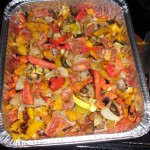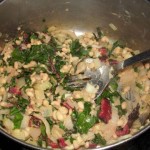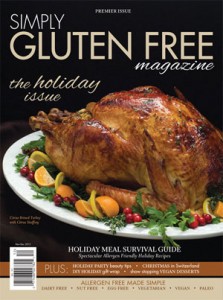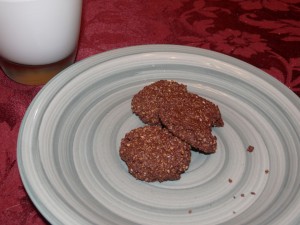I love Springtime. More sunshine, flowers coming up, and I just want to be outdoors…and not in my kitchen. I’m still not used to the longer days, so by the time it starts getting dark and I start thinking about dinner, I’m often scrambling to get food on the table. So it’s a great time to refocus on quick and easy.
I love good food, but I’m also big on time savers. For me, that means:
- The delivery services from nearby farms, like Relay and Washington’s Green Grocer. I can get organic fruits, veggies, meats, etc. easily, and Relay also has gluten-free products from Triple Oak Bakery and others.

- Buying non-perishables staples in bulk on Amazon, like Larabars, canned beans that are tested gluten-free like Eden, broth (we always use Pacific) and more. They’ve probably got your favorite mixes and pasta, and the normal basics like soups, paper products, etc. That makes my trip to the store quicker and less stressful. Of course, this only makes sense for foods you know you like and that you’ll use in large quantities.
- I’m also a big fan of companies that test for gluten and are certified, like Nuts.com. They’ve got nuts, and also dried fruits, gluten-free grains, snacks, etc.
- Frozen veggies. Yes, really. You totally can’t tell if the spinach was frozen once it cooks down, and it’s quicker, more convenient and cheaper.
- Menu Planning! Heather of Celiac Family hosts a weekly gluten-free menu swap. Sometimes for me that’s a formal plan, sometimes it’s a physical list and sometimes it’s a mental one. But if I don’t do it, I end up making several extra trips to the store.
I asked a few fellow gluten-free bloggers for suggestions as well.
Heather of Celiac Family has a lot of practice cooking gluten-free for the whole family! She suggests:
• Slow-cookers are great for getting the meal started in the morning, so you don’t have as much prep work to do at dinner time. (My recipe for Mexican chicken is great for tacos, rice bowls, or even a quick plate of nachos.)
• Cook larger amounts than needed so you have leftovers for another meal that week. I always have leftover Mexican chicken, so I can use it for tacos the first night and taquitos or rice bowls a few days later.
• Lately, I also find roasting vegetables in the oven helpful. While the veggies are cooking, I can work on the rest of the meal. I toss the veggies in a little olive oil and sprinkle with salt. Roast in the oven at 375 until tender. I find asparagus takes about 10 min., cut and peeled sweet potatoes about 20, and cut and peeled red potatoes about 30 (depending on the size).
Ricki Heller of Diet Dessert and Dogs is both gluten-free AND vegan, so she’s an expert juggler (Caution–she does have a gf recipe index, but some recipes from several years ago do contain gluten). Some of her tips:
- Always cook big-batches if you can; then just pack in smaller servings in the freezer (you need a big freezer for this one!). You can take out a container of quinoa and a container of sauce and then just defrost and have an “instant” meal (you can mix and match this way, too)

- Make use of your appliances, and invest in good ones: I use my food processor and/or high-speed blender EVERY day.
- Plan before you cook: set up your mis en place (all parts measured and placed on the counter) so you don’t waste time while trying to mix things.
- Enlist help: hubby, kids, etc. can have a task to make the whole prep time faster
Carrie of Ginger Lemon Girl shares that her suggestions and quick go-to meals:
- One easy meal is 1-2 bags of frozen veggies microwaved and eaten with a 90-second bag of pre-cooked brown rice + sometimes with deli roasted chicken, sometimes with eggs, sometimes just veggies & rice
- Sandwich night! gluten-free bread, turkey, ham, lettuce, etc… and we love applesauce
- Admittedly we also order food from the one (of two) restaurant in our town about once week — for gluten free, I always keep it super simple (not glamorous at ALL) and order plain steamed chicken & vegetables and plain white rice. (Cheryl’s note: we’re lucky that in the DC area we do often have more options!)

- I also like to stop and pick up a deli roasted chicken and then just steam broccoli and sweet potatoes to go with it in the microwave when I get home.
Need more ideas?
- 50 of my quick and easy suggestions are here
- Carrie shares some of her easy meal ideas here
- Shirley of Gluten-Free Easily has a list of 50 suggestions
News:
My recent articles & quotes
- Gluten-free and Vegetarian? Check out my article in Today’s Dietitian
- Okay, we all know sugar isn’t a health food, but most of us get more than we realize. More on why it’s a problem and my thoughts in “Avoid the Sour Side of a Sweet Tooth” in the Washington Post
- Can enjoying your food help your health? Learn more about Mindful Eating in the March issue of Today’s Dietitian
Upcoming Meetings:
- NFCA is hosting a teleconference on the Neurological impact of Celiac on April 9th. Sign up here (it will also be archived)
_______________________________________________________
Cheryl Harris, MPH, RD is a Registered Dietitian, Nutritionist and Certified Wellcoach in Fairfax & Alexandria, VA. She helps people with a range of dietary issues , including Celiac Disease, GI issues, food allergies, pregnancy, breastfeeding, vegetarian and vegan diets, preventing diseases and “whole foods” eating. Let’s get you on your way to achieving your goals and feeling great! Email or call 571-271-8742.






















